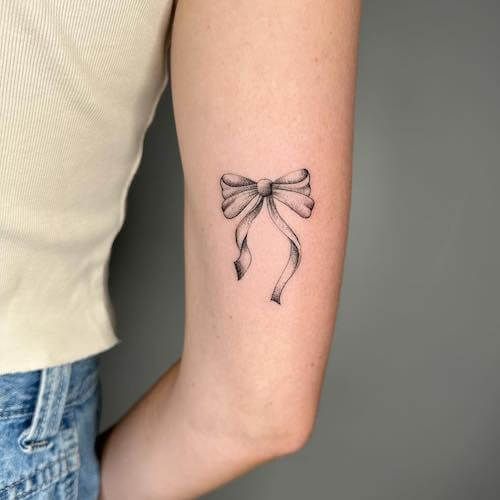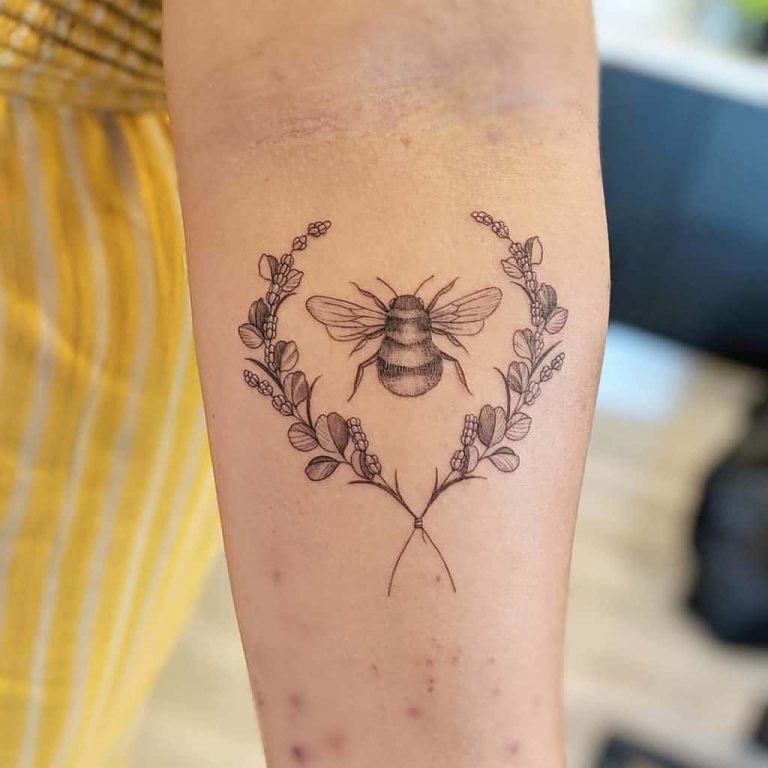Last Updated on February 6, 2025 by Sheila R. Wright
Polynesian tattoos hold deep cultural significance. They are not just body art but stories inked on skin.
Polynesian tattooing is an ancient practice. Each symbol and design carries a unique meaning. These tattoos tell tales of heritage, beliefs, and personal history. They serve as a visual language, communicating identity and status. From the intricate patterns of Samoa to the sacred motifs of Hawaii, Polynesian tattoos are rich with tradition.
Understanding their meanings can offer a deeper appreciation for this art form. This blog post will explore the meanings behind various Polynesian tattoo designs. Dive in to discover the stories behind the ink.

Credit: www.youtube.com
Read More: Female Tattoos With Meaning: Inspiring Designs and Symbolism
History Of Polynesian Tattoos
The history of Polynesian tattoos spans thousands of years. These tattoos carry deep cultural and spiritual significance. Originating from the many islands of the Polynesian Triangle, each design tells a unique story. Let’s explore the rich history and meaning behind these beautiful works of art.
Ancient Origins
Polynesian tattoos date back to ancient times. They were more than just body art. Tattoos marked rites of passage and significant life events. Both men and women received tattoos. Each design was unique to the individual. Tattooing was a sacred ritual, performed by skilled artists called “tufuga.”
The tools used were simple yet effective. Artists used combs made from bones, shells, or wood. They tapped the combs into the skin with a mallet, creating intricate designs. This process was painful and required great endurance.
Cultural Significance
Polynesian tattoos hold deep cultural meaning. They symbolize identity, status, and heritage. Each tattoo tells a personal story. Patterns and symbols represent various aspects of life. For example, the turtle symbolizes long life and peace. The shark symbolizes protection and strength.
Tattoos also connect individuals to their ancestors. They serve as a reminder of their roots and traditions. In many Polynesian societies, tattoos are seen as a rite of passage. They signify maturity and readiness for adulthood. The designs are passed down through generations, preserving the culture.
Polynesian tattoos are more than just body art. They are a living tradition. They tell the stories of the people who wear them. Each tattoo is a work of art, full of meaning and history.

Credit: twitter.com
Read More: 3 Triangle Tattoo Meaning: Uncover Symbolism and Inspiration
Key Symbols In Polynesian Tattoos
Polynesian tattoos are rich with symbolism and cultural significance. They tell stories of heritage, beliefs, and personal journeys. Understanding these symbols adds depth and meaning to the tattoos. Below are some key symbols commonly found in Polynesian tattoos.
Ocean And Waves
The ocean holds great significance in Polynesian culture. It represents life, fertility, and the unknown. Waves symbolize the constant motion and changes of life. They can also depict a person’s travels and adventures.
In Polynesian tattoos, the ocean and waves are often used to show a connection to the sea. This can mean both physical and spiritual journeys. The ocean is seen as a source of food, a path for exploration, and a place of mystery.
Common designs include:
- Curved lines to show gentle waves.
- Sharp, angular lines for stormy seas.
- Repetitive patterns to emphasize movement.
Tiki And Deities
Tiki figures are another important symbol. Tiki represents ancestors and deities. They are often depicted as human-like figures with large eyes and an open mouth. These figures are believed to provide protection and guidance.
Different deities symbolize various aspects of life:
| Deity | Symbolism |
|---|---|
| Tangaroa | God of the sea, symbolizes creation and fertility. |
| Tāne | God of forests, represents life and growth. |
| Tū | God of war, signifies strength and courage. |
Incorporating Tiki and deities into tattoos serves to honor these figures and their influence. Each design can be customized to reflect the wearer’s personal connections to these powerful symbols.
Placement And Design
Polynesian tattoos hold deep cultural meanings. The placement and design of these tattoos are significant. They often tell a story about the wearer’s heritage, achievements, and beliefs. Each body part and design element has a specific meaning. Understanding these aspects can help you appreciate the rich symbolism behind Polynesian tattoos.
Body Parts And Their Meanings
The placement of a Polynesian tattoo on the body is crucial. Different body parts symbolize various aspects of life. For example, tattoos on the head represent spirituality and wisdom. The head is considered the most sacred part of the body. Tattoos on the upper arms and shoulders signify strength and bravery. These areas are often decorated with symbols of protection and power.
The chest and back are associated with honor and social status. Tattoos here often tell stories of the wearer’s lineage and accomplishments. Tattoos on the legs and feet represent movement and progress. They might symbolize a journey or important life changes. Each placement choice reflects a specific aspect of Polynesian culture and personal identity.
Design Variations
Polynesian tattoo designs are diverse. They vary based on the island group, tribe, and personal significance. Common elements include geometric patterns, natural motifs, and symbolic figures. Each design element carries its own meaning. For instance, the spearhead design symbolizes courage and warrior spirit. The turtle shell represents longevity, health, and family.
Shark teeth patterns signify protection and adaptability. They often adorn tattoos on warriors. Enata, or human-like figures, depict people and their relationships. These figures can represent ancestors, deities, or significant individuals in the wearer’s life. Each variation adds layers of meaning and depth to the tattoo’s story.
Modern Interpretations
Polynesian tattoos have always held deep cultural significance. Today, these ancient symbols have taken on new meanings and styles. In this section, we explore the modern interpretations of Polynesian tattoos. Learn how contemporary styles and fusion with other cultures have evolved these traditional designs.
Contemporary Styles
Modern Polynesian tattoos often combine traditional elements with new artistic touches. Artists use clean lines and bold patterns to create unique designs. These tattoos may feature:
- Geometric shapes: Precision and symmetry are key.
- Minimalist designs: Simple yet powerful.
- Colorful accents: Adding a modern twist.
These styles appeal to a wider audience. They maintain their cultural essence while embracing contemporary aesthetics. This blend of old and new attracts both Polynesians and tattoo enthusiasts worldwide.
Fusion With Other Cultures
Polynesian tattoos have also merged with other cultural styles. This fusion creates a rich tapestry of designs. Here are some common fusion styles:
- Japanese-Polynesian: Combining Japanese motifs with Polynesian patterns.
- Celtic-Polynesian: Integrating Celtic knots with Polynesian symbols.
- Tribal-Polynesian: Blending tribal art from various cultures.
Each fusion style tells a unique story. It reflects both the wearer’s heritage and their personal journey. The result is a tattoo that is both meaningful and visually stunning.
Modern interpretations of Polynesian tattoos continue to evolve. They honor tradition while embracing innovation. This makes them a timeless choice for tattoo lovers around the world.

Credit: www.pinterest.com
Read More: Barb Wire Tattoo Meaning: Symbolism and Cultural Significance
Frequently Asked Questions
What Is The Meaning Of Polynesian Tattoos?
Polynesian tattoos hold deep cultural significance. They often represent heritage, social status, and personal achievements.
Why Are Polynesian Tattoos Important?
They are important because they connect individuals to their ancestry, culture, and personal identity.
How Are Polynesian Tattoos Designed?
Polynesian tattoos are designed using traditional symbols and patterns. Each design has a specific meaning and purpose.
Do Polynesian Tattoos Hurt More?
Tattoo pain varies per person. Traditional Polynesian tattoos might be more painful due to the tapping method used.
Can Anyone Get A Polynesian Tattoo?
Anyone can get a Polynesian tattoo. However, understanding and respecting the culture is crucial.
Conclusion
Polynesian tattoos hold deep cultural significance and tell unique stories. Each design element carries specific meanings. Understanding these can connect you to the rich Polynesian heritage. Respect and appreciate the artistry behind these tattoos. When choosing a design, consider its cultural roots and personal relevance.
Embrace the tradition with knowledge and reverence. Polynesian tattoos are not just body art; they are symbols of identity and history. Let your tattoo honor this beautiful tradition.



